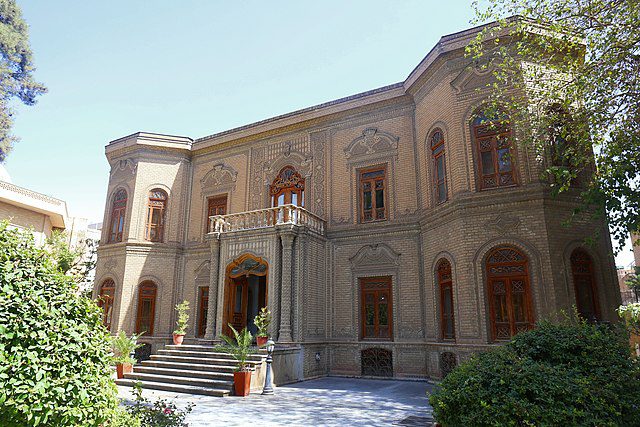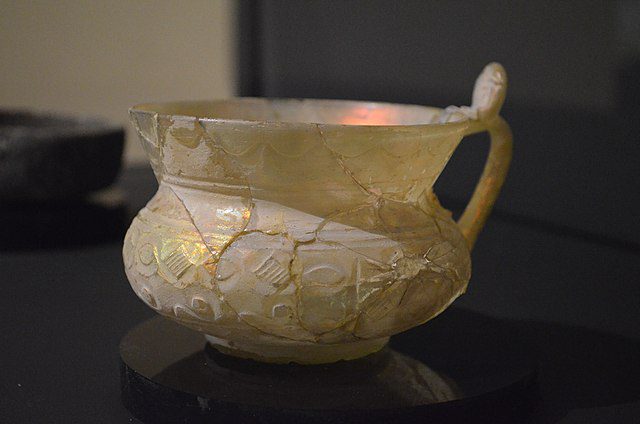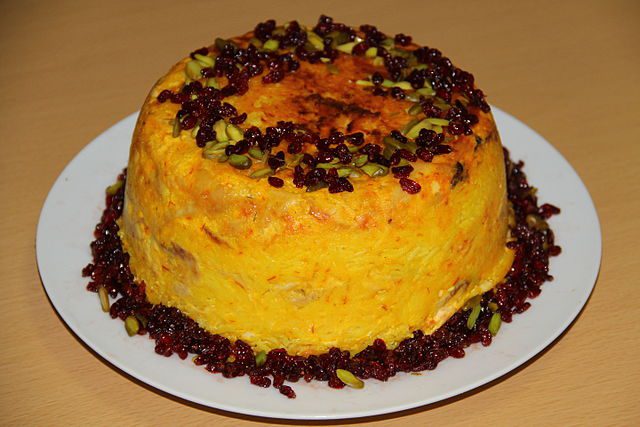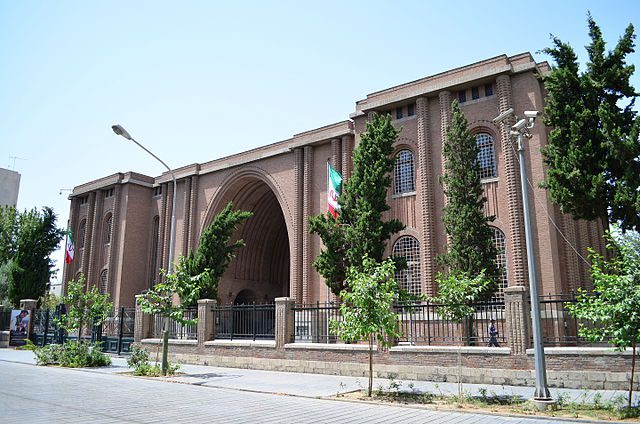Table of Contents
Step into the mesmerizing world of the Glassware Museum of Iran, Tehran. Housed in a stunning Qajar-era building, this cultural gem sprawls across 7000 square meters, spanning two floors and six halls. The museum, situated on Si-Tir Street, finds its abode in an impressive octagonal mansion commissioned by Ahmad Qavam, a key political figure in Iran during the Ahmad Shah Qajar and Pahlavi eras.
With its rich history and intricate architecture, this museum beckons visitors to immerse themselves in the vibrant artistic heritage of Iran, woven into the very fabric of its walls.
Glassware Museum of Iran History
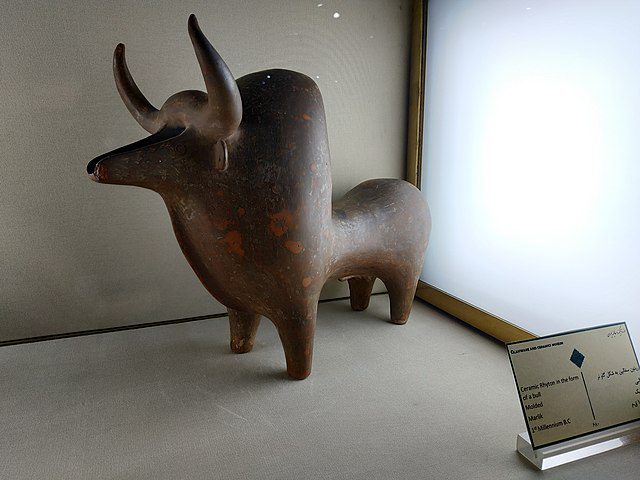
The Abgineh Museum or Glassware Museum of Iran, housed in a 90-year-old historical house in Tehran, carries a fascinating story. Back in 1932, this house belonged to Ahmad Qavam, a well-known politician from the Qajar era. It served as both his home and office, witnessing the significant events of its time.
Over the years, the house changed – first as the Egyptian embassy, then coming under Farah Pahlavi’s bureau in 1976. However, the most notable transformation occurred in 1980 when it became the Abgineh Museum, preserving and sharing the historical tales within its walls. Recognizing its cultural importance, the museum earned a spot on the esteemed list of Iran National Heritage in 1998, solidifying its role in safeguarding Iran’s vibrant history.
Glassware Museum of Iran Architecture
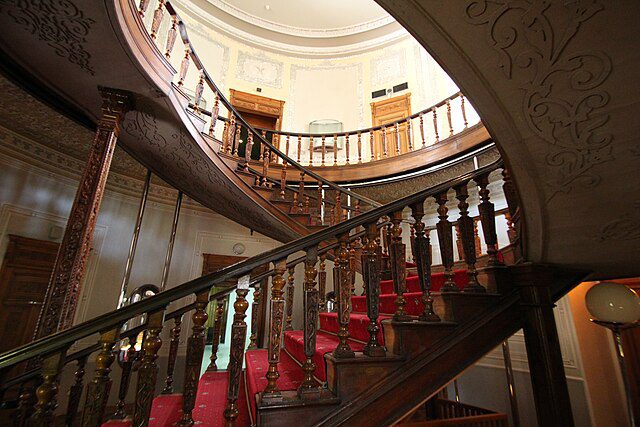
The Glassware and Ceramic Museum of Iran, along with its lovely garden, spreads across a vast 7000 square meters. This cozy two-story building is a blend of Persian and European styles, making it truly one-of-a-kind. Keep an eye out for the eye-catching Russian-style wooden staircase that adds a special touch to the museum.
Inside, thanks to the clever design by Hans Hollein, a famous Austrian architect, you’ll find a unique charm. Hollein drew inspiration from Persia’s history, incorporating elements from famous places like Persepolis and Pasargadae, giving the museum a modern twist on ancient Persian architecture.
The building itself is a work of art too. More than 50 types of bricks, each with floral patterns inspired by Seljuk art, decorate the interior and exterior. Take a moment to appreciate the delicate plaster works on the ceilings and walls – a detail worth looking up for. And don’t miss the enchanting mirror works, a delightful feature in Persian decoration that might just capture your heart.
Things to Do in the Glassware Museum of Iran
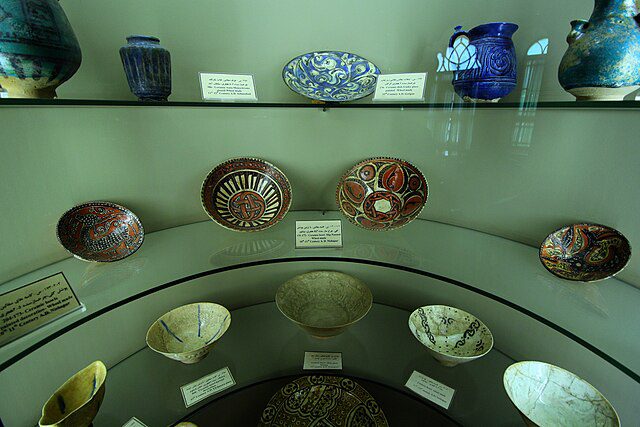
Gift Shop and Greenery
Visit the ground floor for a delightful gift shop filled with books, DVDs, and souvenirs. Take a peaceful stroll in the museum garden, an unexpected oasis in the middle of busy Tehran.
Photo-Friendly
Snap away at the museum—photos and videos are encouraged. Just remember, smoking is a no-go anywhere in the Glassware and Ceramic Museum of Iran. Immerse yourself in the exhibits and enjoy a serene atmosphere without the haze of smoke.
How to Get to the Glassware Museum of Iran
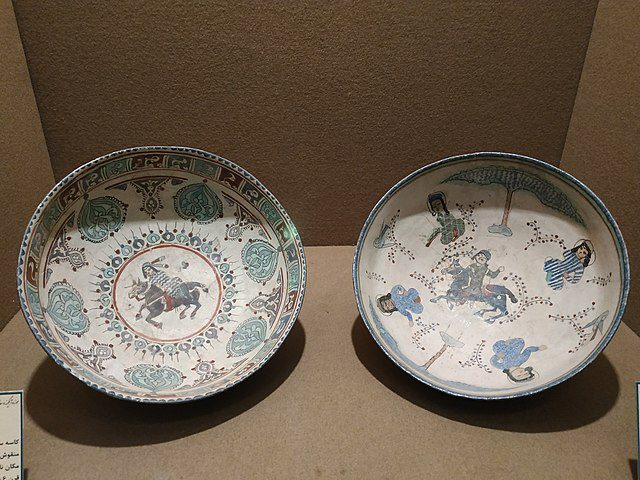
Whether you prefer the swift underground currents of the subway, the panoramic views from a bus window, or the leisurely pace of a pedestrian stroll, there are accessible and enchanting routes leading to this historical marvel.
By Subway
Take the red subway line and hop off at Saadi Metro Station. A short 20-minute walk westward from there leads you to the Glassware Museum of Iran, making it a straightforward journey filled with the buzz of city life.
By Bus
Explore the city by catching the Baharestan Square to Jomhouri Square bus line on 30th Tir Street. Enjoy the scenic ride and arrive effortlessly at the Glassware Museum of Iran, where history and art intertwine.
On Foot
Opt for a casual 20-minute walk to discover Tehran’s landmarks – Imam Khomeini Square, Ferdowsi Square, and Teatre Shahr Metro Station. Let the city unfold around you, guiding you to the Glassware Museum of Iran, a captivating blend of tradition and modernity.
Recommended Sightseeing Time of Glassware Museum of Iran
Explore the Glassware Museum of Iran’s enchanting world of glass in just under three hours. Each glass piece narrates Iran’s rich history, offering a quick yet immersive cultural journey.
The concise visit ensures you savor the beauty without feeling rushed.
Working Hours of Glassware Museum of Iran
The Glassware Museum of Iran artworks welcomes visitors from 9 a.m. to 5 p.m. every day, except for a few public holidays. As the sun comes up, you can dive into a world of art and history. The museum displays all kinds of glass treasures, calling everyone to come and see the beautiful things made by people over the years.
Where to Eat Near Glassware Museum of Iran
If you’re looking for a delightful meal near the Glassware and Ceramic Museum, Tehran has a plethora of options. For authentic Persian cuisine, try Vahid Choloii and Farhang Asil Restaurant on Panzdah-e Khordad Street, or head to north Laleh Zar for the flavorful offerings at Tarighat Restaurant. A bit further south in Tehran Grand Bazaar, indulge in the renowned Moslem Tahchin or savor the flavors of Sharaf El Islami Restaurants.
If fast food is more to your liking, consider options like Rotodel in Mobile Bazaar on Hafez Street, Tameshk on Imam Khomeini Street, or Delion at Valiasr Crossroads. With these diverse choices, your stay near the museum and culinary experiences in Tehran promise to be rich, varied, and truly memorable.
Where to Stay Near Glassware Museum of Iran
Tehran, a bustling city, offers various hotels near the Glassware Museum. Choices like Parasto Hotel, Hafez Hotel, and Ferdowsi International Grand cater to different tastes. For a mix of tradition and modernity, consider Arian Hotel or Fars Hotel. Seeking elegance? Explore Elyan Hotel or the classic charm of Markazi Hotel.
Whether you prefer the vibrant energy of Arman Hotel or the international flair of New Naderi Hotel, Tehran’s accommodations promise not just proximity to the museum but also a glimpse into the city’s dynamic spirit. Embrace diversity in Tehran’s hospitality scene for a truly enriching experience.
Other Attractions Near Glassware Museum of Iran
Nestled in the heart of Tehran is the fascinating Glassware Museum of Iran, showcasing the nation’s artistic talent. Beyond its doors, there’s a world of wonders waiting to be discovered, each contributing to the rich history of the city. Join us as we embark on a journey to explore nearby attractions.
Tehran Grand Bazaar
Dive into the bustling Tehran Grand Bazaar, a vibrant maze where commerce and culture intertwine. Amidst narrow alleys filled with the scent of spices and colorful textiles, experience a sensory journey through centuries of trade. This lively marketplace encapsulates Tehran’s enduring spirit of exchange, offering everything from traditional crafts to modern goods.
National Museum of Iran
Step into the National Museum of Iran, a portal to the nation’s ancient past. Explore artifacts spanning millennia, from ancient pottery to majestic sculptures. Each exhibit unfolds a chapter in Iran’s rich history, showcasing the diverse tapestry of its civilization in the heart of the Middle East.
Golestan Palace
Explore the grand Golestan Palace, a majestic symbol of Persian opulence. Wander through its adorned halls and courtyards, discovering tales of kings and queens who once graced these regal spaces. This architectural wonder takes you back to a time when royalty held court within its walls, leaving an indelible mark on Iran’s history.
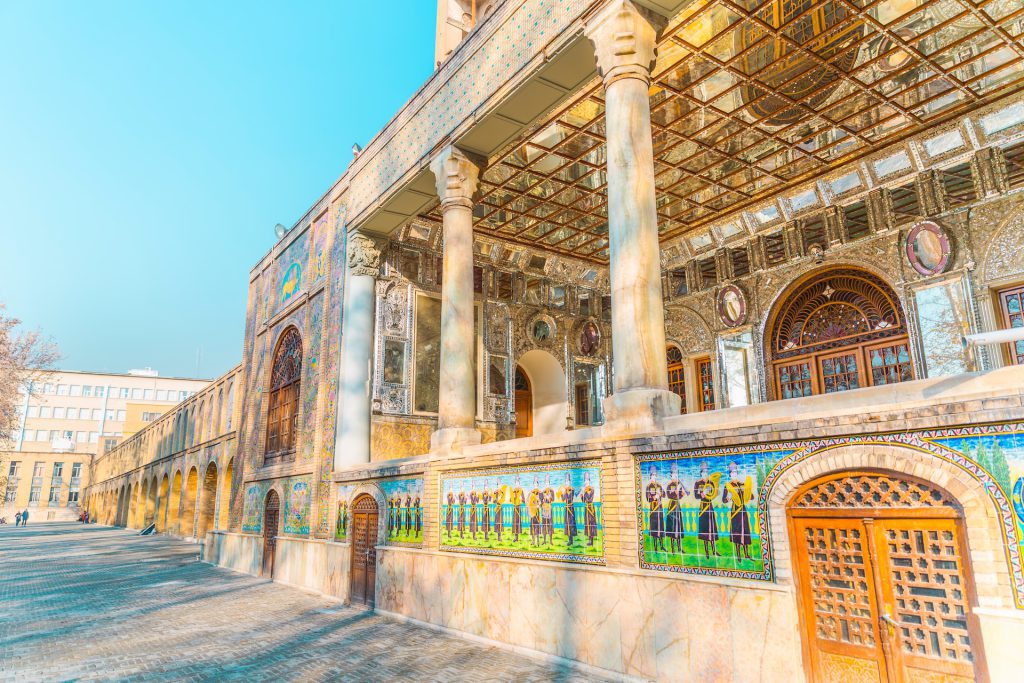
Portal of Bagh-e Meli
Pass through the enchanting Portal of Bagh-e Meli into a serene sanctuary where nature and art harmonize. Lush greenery and tranquil pathways provide a peaceful escape from the city’s hustle. This gateway invites contemplation, offering a haven for those seeking respite amidst the vibrant cityscape.
Malek Museum and Library
For knowledge seekers, the Malek Museum and Library are a haven where historical artifacts and written wisdom converge. Explore an extensive collection of manuscripts and rare books, offering a glimpse into Iran’s intellectual heritage. This museum is a testament to the enduring quest for knowledge that defines the nation’s cultural landscape.
City Park
Escape the hustle and bustle at City Park, a sprawling green oasis in Tehran. Enjoy strolls along tree-lined paths, picnics by the water, or simply bask in the beauty of nature. This park provides a serene retreat, offering a welcome respite from the energetic city life.
Valiasr Street
As the sun sets, embrace the allure of Valiasr Street, the Middle East’s longest street. Under the starlit sky, experience the lively energy of cafes, restaurants, and shops. Each step unveils a new facet of Tehran’s dynamic nightlife, making Valiasr Street a journey through the city’s heartbeat after dark.
FAQs about the Glassware Museum of Iran
Q1: What is the largest Museum in Iran?
A1: The biggest museum in Iran is called the National Museum of Iran.
Q2: Does Iran have museums?
A2: The Iran National Museum is considered a ‘mother museum’ because it is the largest, most important, and oldest museum in the country. It is also one of the few big museums in the world when it comes to the quantity, diversity, and quality of its exhibits.
Q3: What is Iran most famous for?
A3: Iran has a lengthy history of learning, leading to a diverse culture in art, literature, poetry, music, cuisine, and architecture. Early Iranian intellectuals penned important works on philosophy and medicine, and algebra was invented by an Iranian mathematician.
Q4: What is the most famous thing made in Iran?
A4: The Persian carpet, also known as a Persian rug, is the most renowned souvenir from Iran and is recognized worldwide. These handwoven pieces of authentic art are crafted by highly skilled carpet weavers in various regions of the country.
Q5: What is the most modern museum in Iran?
A5: The Tehran Museum of Contemporary Art (TMoCA) is one of the biggest art museums in Tehran, Iran. It houses a collection of over 3,000 items, featuring world-class European and American paintings, prints, drawings, and sculptures from the 19th and 20th centuries.
Last Words: Visit the Best of Glassware Museum of Iran with a Customized Tour
Tehran’s Abgineh Museum, also known as the Glassware and Ceramic Museum, housed in a stunning Qajar-era building on Si-Tir Street. It spans 7000 square meters with six halls. The museum, commissioned by Ahmad Qavam, showcases Iran’s rich artistic heritage in a captivating setting.
Iran Tours and Travel Packages become an essential gateway to the splendors of the Glassware Museum and beyond. One exceptional travel partner that excels in crafting these tailor-made journeys is To Iran Tour. Specializing in creating memorable and personalized Iran Tours, To Iran Tour takes pride in designing travel plans that align with the unique preferences of each traveler.
Let us help you craft memories that will last a lifetime.

